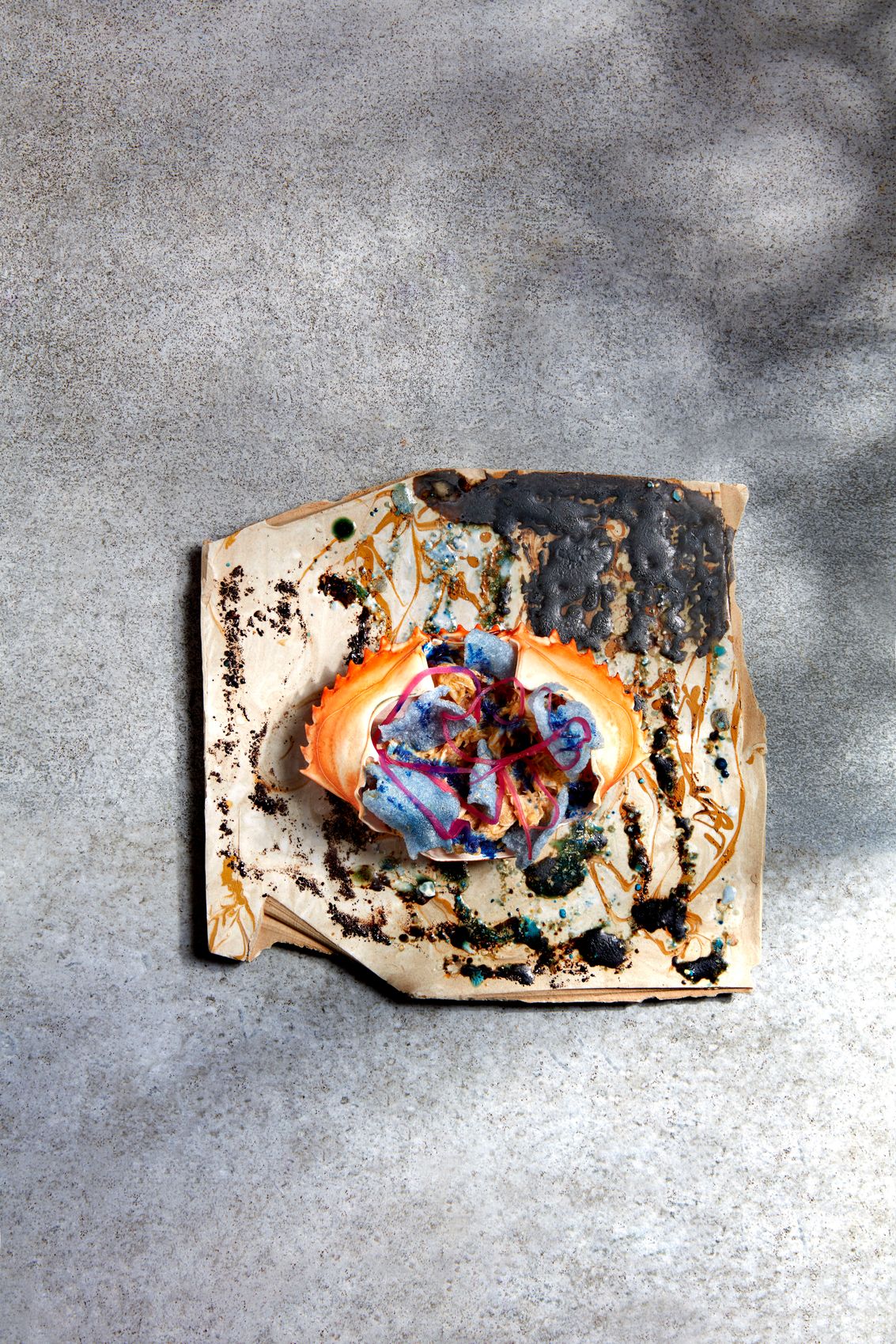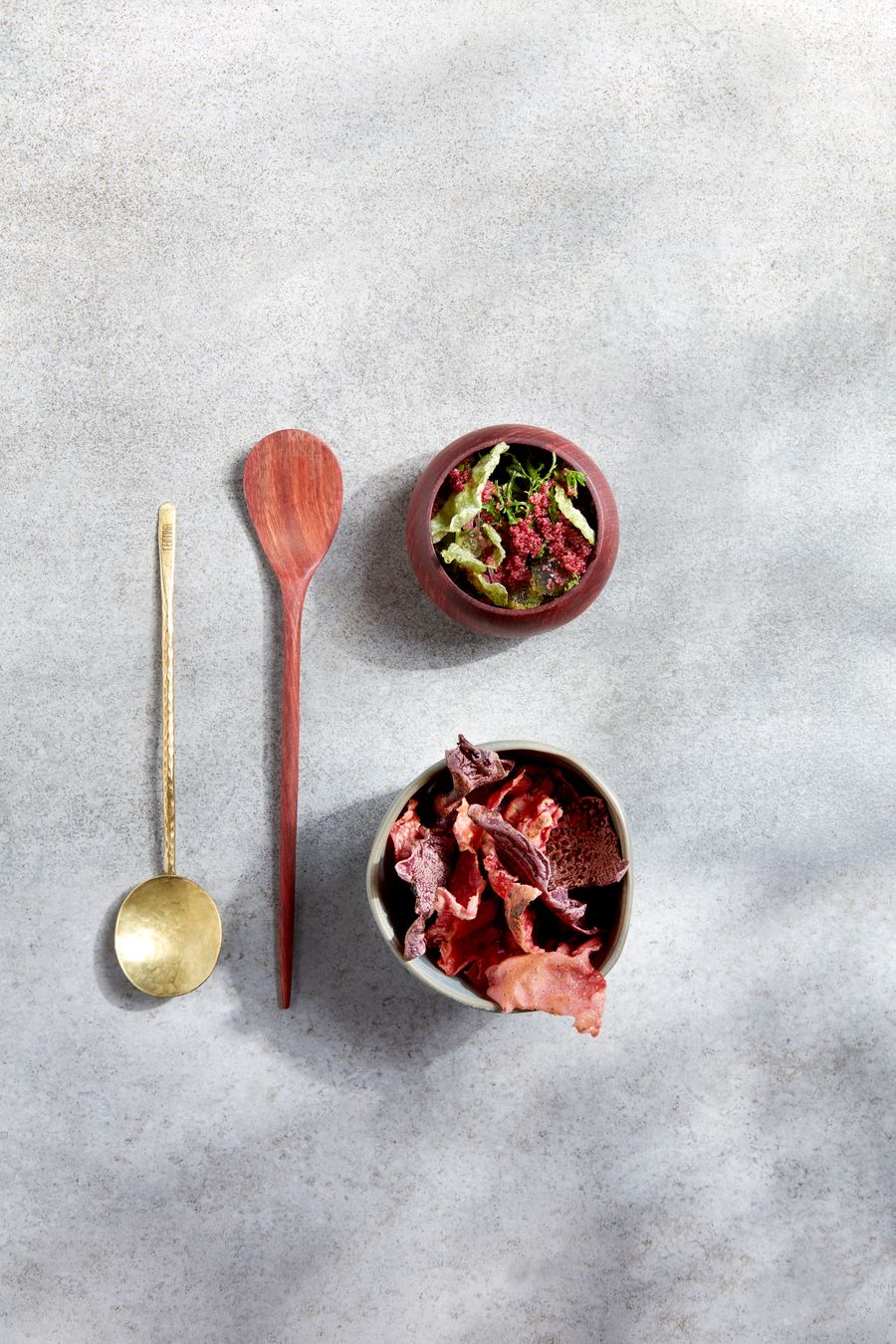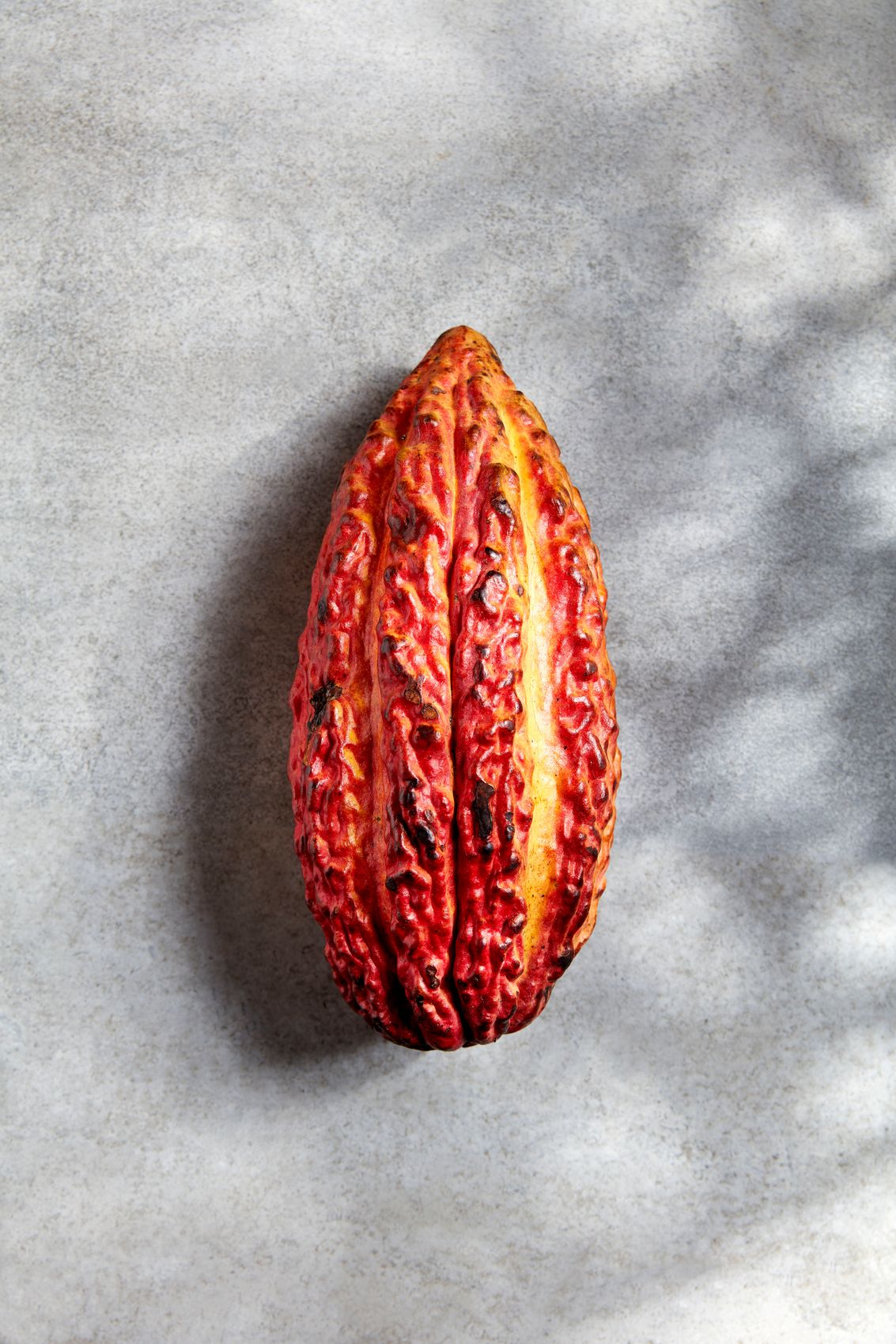There is a visually alien quality to the food of husband and wife team Virgilio Martinez and Pia Leon. Bright orange glob of uni and scallops surrounded by strips of cucumber dyed cobalt with spirulina; sweet potato dusted in ash and resembling an uncracked geode. What looks like extraterrestrial meals reveal to be tasty, well-intentioned bites meant to showcase the biodiversity of the couple’s hometown of Peru. After all, with its varied topography – something Martinez likens to a crumpled-up piece of paper – and microclimates, the country has much to offer. Cacao finds its cradle in the Amazon, while potatoes and ancient grains like quinoa find ancestors in the Andes. What the couple is doing, Martinez stresses, is not "hyperlocal", but an exploration of what Peru has to offer. It is a celebration of how its native flora have found their way into the global Western diet – done so by showcasing many of the other unexplored ingredients in an internationally-palatable fine dining setting.

How does one experience this? Bar taking the 30-hour flight to Peru, Martinez and Leon are in town for the latest edition of the Mandala Masters with a collaborative concept, Metres Above Sea Level (MASL). Named thus for the range of elevations the dishes represent, the menu offers a journey from 10 meters below sea level (molluscs, caviar) to 3580 meters above sea level (tubers, clay) all within the air-conditioned comfort of Art at the National Gallery.
What is the experience like? Very Michelin-ey (the irony being there's no Michelin Guide in Peru) in its service and beverage options – although there's a clear purpose to move away from the trappings of French fine dining.
(Related: Where to Eat Now, August 2022)


For one, we didn't touch a single knife during the whole 11-course meal we tried. Almost every course came in a shallow vessel of wood, earthenware, or root vegetable shaped exactly – by coincidence or design – to be cusped in one hand, while the other hand navigates the dish with a spoon. Other times, fingers sufficed, like in two snacks with origins 10 meters below sea level – raw squid and seaweed on top of a feathery-light squid ink cracker; and an umami bomb of abalone and caviar perched on cured algae focaccia.
We did, however, witness a member of the front of house painstakingly try to fold a linen napkin neatly with a pair of tweezers – so the experience never strays that far from a fine dining experience. Another boon from French gastronomy? Beverage pairings. MASL offers a mix of cocktails and wines for the alcoholic option, while the temperance pairing involves mostly fruit juice blends and teas. Highlights include a tannic, clove-reminiscent concoction of banana peel and huacatay (Peruvian black mint) that was paired with a dish of sweet potato foam, avocado puree and huacatay, a species of marigold that tastes like a mix of cilantro and mint.
Said concoction also worked surprisingly well with our beef course – the first-ever we've eaten with just a spoon. It's one where we alternate between textures, from the chew of wagyu cubes (not Peruvian) sitting in a properly tacky demi glace, and the soft saltiness of cured beef and potato puree.
For the wine nerds, look out for the bottles that the MASL team has carted over from Peru. While one certainly can (and should) have that Don Melchor with the beef, save some space for the left-field stuff like a skin-contact wine made from a blend of the traditional pisco grapes of Albilla and Italia (muscat). This particular option from natural producer Bodega Murga is a great example of how expressive unfettered winemaking can be: Tense, floral, and almost Islay-like in its salinity and smoke.
It's definitely not just the wine too. If you're planning to turn up for the peculiarities and novel ingredients, MASL has much to offer. Ingredients from river fish scales to coffee beans are on display for you to see, touch, and smell. To taste, there's native Peruvean tubers cooked in Andean clay, to be eaten dipped in uchucuta, a traditional peruvian sauce made with nuts, chillies, and herbs. There's also Andean corn, offered in a dish via different textures alongside kiwicha, a pseudo grain related to quinoa.
 Peruvian Cacao
Peruvian Cacao
Meanwhile, Chuncho, a variety of low-yielding, high-altitude cacao endemic to Peru, is used pod-to-seed for a dessert. The cacao husk is made into a dense salted caramel, which accompanies cacao nibs, cacao sponge, and an uncannily smooth and rich chocolate creme brulee.
Go hungry for information, open to surprises, and perhaps ready to book a flight to Peru.
MASL is available as an 8-course lunch or 11-course dinner from now until 30 October 2022.
Visit MASL at Art, #06-02, National Gallery Singapor, Tel: 6866 1977. For more information, click here










 Peruvian Cacao
Peruvian Cacao




 Back
Back
